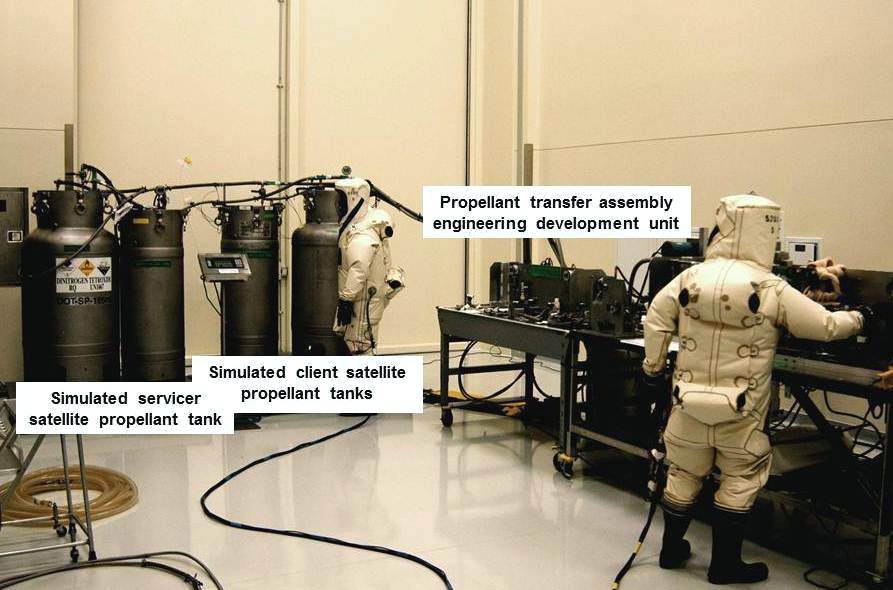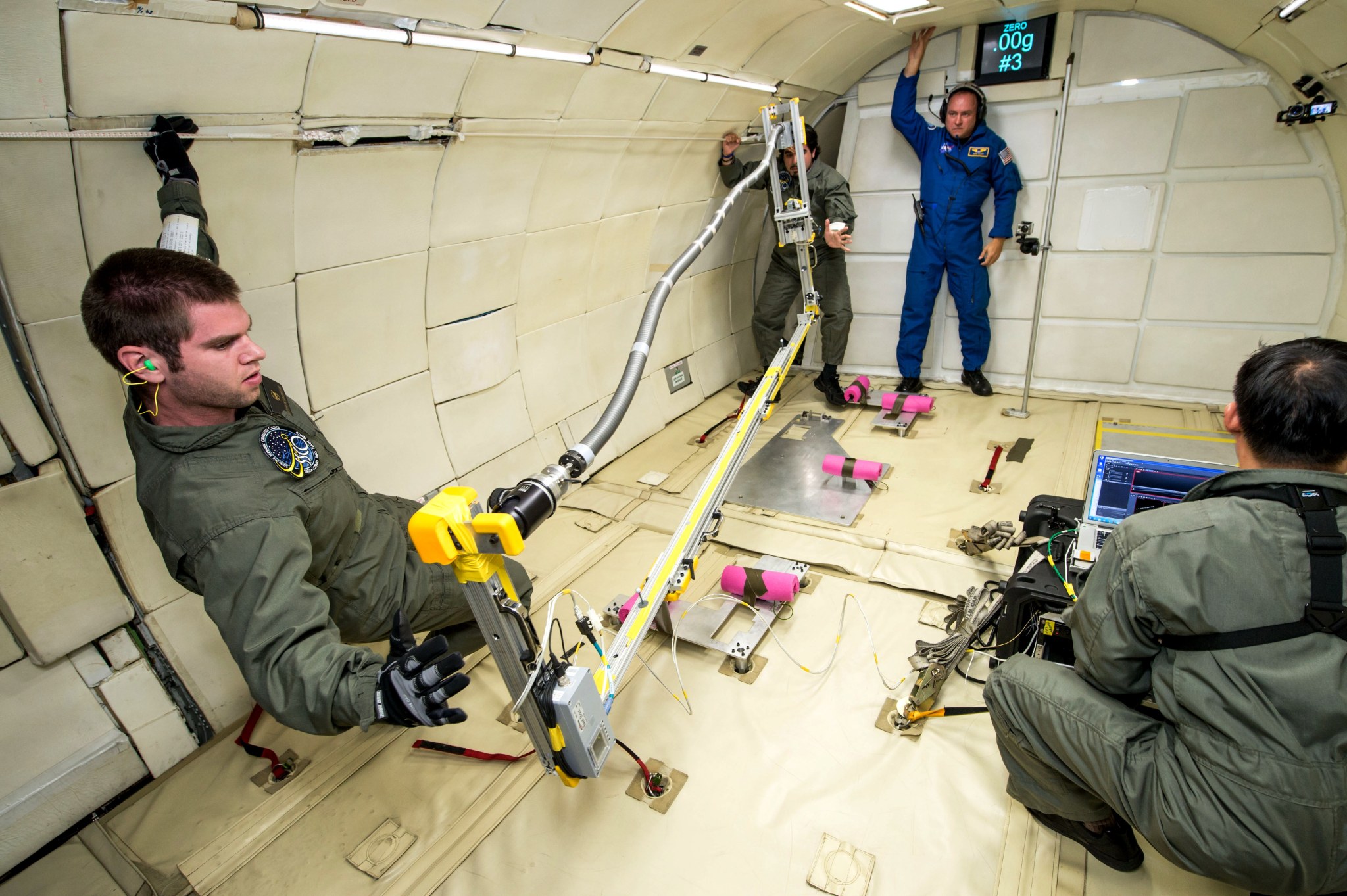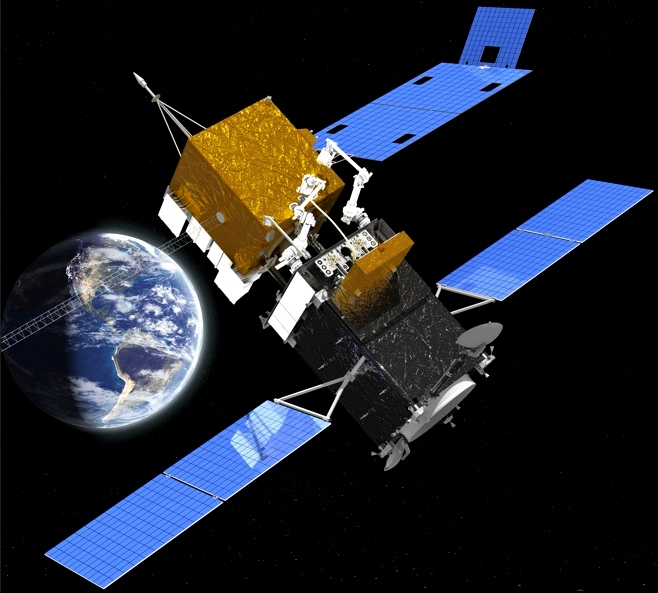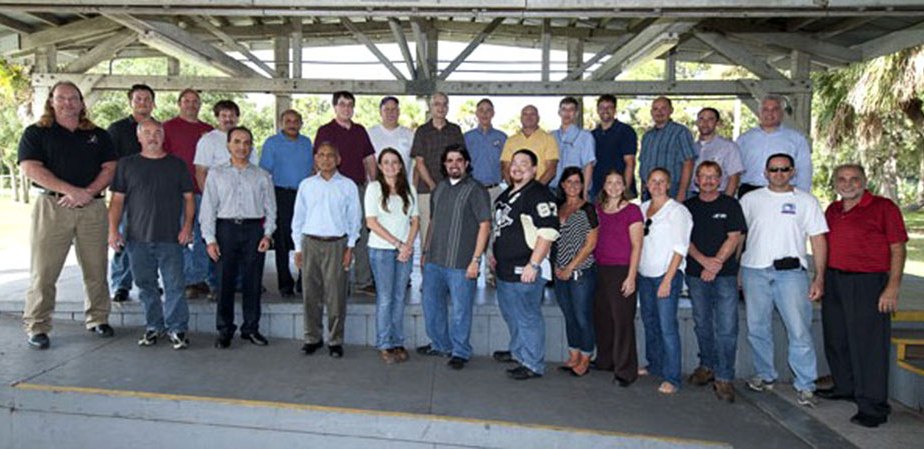Since the first satellites were launched during the late 1950s, daily life has become more and more dependent on spacecraft orbiting the Earth. From time to time, these spacecraft experience failures or simply run out of the propellant necessary to keep them operating properly. Engineers at NASA’s Kennedy Space Center in Florida are partnering with counterparts at the agency’s Goddard Space Flight Center in Maryland to develop systems to bring potential future robotic “service tow trucks” to orbiting spacecraft in need of aid.
Operating under Goddard’s Satellite Servicing Capabilities Office’s (SSCO) technology development effort, the project is now moving into the next phase with a team at Kennedy developing a reliable and accurate prototype high-pressure propellant transfer assembly using lessons learned from recent testing.
Tom Aranyos, technical integration manager in NASA’s Fluids and Propulsion Division at Kennedy, is leading the team of NASA and contractor specialists that built and assess performance of an engineering development unit (EDU) of a propellant transfer system. The system was designed to demonstrate that a robotically operated satellite could refuel another orbiting spacecraft within required typical mission operating parameters.
“Historically, we receive, process and launch spacecraft developed at other centers,” Aranyos said. “That’s given us an extensive knowledge base and diverse capabilities. The satellite servicing project gives us an opportunity to put that experience to work.”
As now conceived by Goddard’s SSCO, the robotic servicer spacecraft would be equipped with the technology it needs to autonomously rendezvous with satellites needing assistance. The servicer would be equipped with a state-of-the-art navigation system, enhanced robotic arms and tools, along with a supply of propellant.
“As part of the Goddard team, we are performing the design, development and qualification testing of the critical hypergolic propellant pumping transfer system,” said Aranyos. “We’re very confident that the technology will work as designed.”
That confidence is based on NASA’s years of experience in satellite servicing and robotic operations.
“The same approaches that were used in successfully servicing the Hubble Space Telescope are being applied to this mission,” Aranyos said.
NASA has acquired a broad experience base in robotically operated spacecraft through the highly successful Mars rovers Spirit, Opportunity and Curiosity. The satellite servicing effort draws from some aspects of this exploration program, such as the robotic arm design. The new effort ultimately tackles and develops a new set of robotic technologies to deal with a challenge set, including autonomous rendezvous and docking with a potentially uncooperative object, refueling technologies, and robotic tools to service satellites not designed to be serviced.

Kennedy’s team began developing an EDU prototype satellite refueling pump in April 2011.
The most recent testing, taking place between April and September 2013, confirmed that a pump-based system could transfer propellant within operational parameters required from a servicing satellite to a client spacecraft.
“Our engineering development unit pump was designed to mimic how a flight system would perform with the specific properties of nitrogen tetroxide,” said Brian Nufer of the Hypergolic and Hydraulics Systems Branch of NASA Engineering and Technology.
Most satellite maneuvering systems use monomethyl hydrazine as fuel and nitrogen tetroxide as the oxidizer. While these commodities are highly-toxic, they provide simplicity in that they are hypergolic — chemically igniting on contact, making it highly reliable for spacecraft maneuvering thrusters.
“The series of tests gave us a chance to see how it worked and find any ‘bugs’ in the system,” Nufer said. “More importantly, this was the first time a flight prototype propellant transfer system has been tested with nitrogen tetroxide.”
According to Aranyos, one of the biggest challenges was completing tests with a limited budget and a short period of time to do the work.
“The team was able to develop a design from ‘commercial off-the-shelf’ technologies for major subsystem elements of the engineering test unit,” he said. “We were also able to use facilities that were available for short periods of time and existing space shuttle era hardware to perform testing with hazardous commodities, thereby saving over $1 million.”

The first in this series of system reference fluid and hypergolic operations was successfully performed between April and September 2013. The EDU pump, metering and control system was filled with nitrogen tetroxide during August and transferred from one container to another within client mission requirements. Over the next four weeks, a series of 15 test procedures were performed to confirm the limits the concept of operations to ensure that the system, with the right set of procedures, could safely refuel satellites in orbit.
Much of the EDU pump testing took place in locations at Cape Canaveral Air Force Station and Kennedy. However it didn’t stop there.
“Our support for the transfer hose system experiments included underwater testing at the University of Maryland’s Neutral Buoyancy Research Facility and tests aboard a zero-gravity aircraft,” said Syrus Jeanes of NASA’s Engineering and Technology Directorate.
He explained that controlled laboratory testing would provide a great deal of data, but operating in a microgravity environment was crucial to predicting how systems will actually perform in space.
Erik Tormoen, also of NASA Engineering and Technology, added that it is crucial to know how things perform differently in microgravity.
“You must perform tests in the environment the hardware will be in when operating in space,” Jeanes said. “Then you can correlate the test results with computer models. This gave us a high degree of confidence that our designs will work as expected.”
Aranyos pointed out that the team met some challenges that some said couldn’t be done.
“They not only accepted the extremely tight schedule challenge and limited budget, but delivered on all promises for development and risk-reduction test efforts. Their engineering development unit flight-like simulation products were capable of supporting the mission goals and requirements,” Aranyos said. “This early subsystem-level testing will allow NASA to move on to the next phase of flight hardware development with lower risks to cost and schedule.”
Aranyos said that the next step will be demonstrating remote, teleoperated robotic transfer line-mating/disconnect tests combined with hypergolic propellant flow testing. These efforts are now scheduled for February 2014 at Kennedy’s Payload Hazardous Servicing Facility.
The recent testing at Kennedy is a crucial step in developing satellite servicing capability, as the project would be an important aid to an ever-growing number of orbiting spacecraft that play key roles in communications, science, defense and weather monitoring.
“This has the potential to help enable a future U.S. industry providing servicing spacecraft,” Tormoen said. “Satellites are expensive to build and launch. There could be a tremendous savings by keeping them in good operating order for longer periods of time.”




























